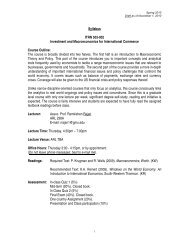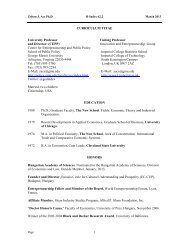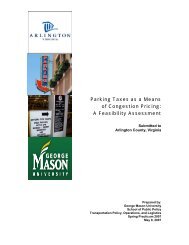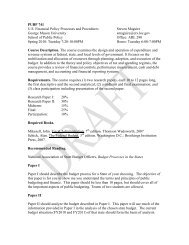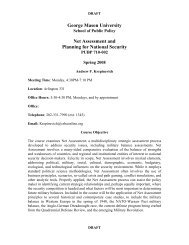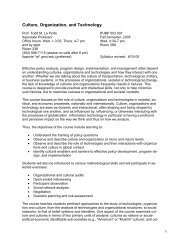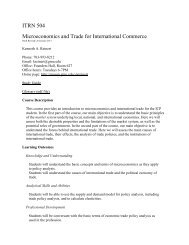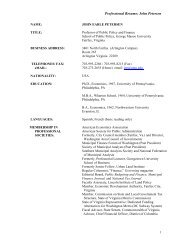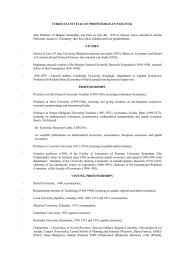Coordinating critical transportation infrastructure vulnerability
Coordinating critical transportation infrastructure vulnerability
Coordinating critical transportation infrastructure vulnerability
You also want an ePaper? Increase the reach of your titles
YUMPU automatically turns print PDFs into web optimized ePapers that Google loves.
3. A State DOT Guide to Highway Vulnerability<br />
3.2 CATEGORIZATION OF TOOLS<br />
Each of the fifteen self-assessment tools was examined and ranked based upon how it addressed<br />
each of the four phases of the emergency response process: Planning and Prevention, Response,<br />
Recovery, Mitigation. Furthermore, each tool was examined to see if it incorporated a regional<br />
approach to assessing vulnerabilities or if it focused solely on one <strong>infrastructure</strong> element. Based<br />
upon these two areas, a set of 36 criteria was developed. Each of the four phases has two subgroups:<br />
Agency/Organizational needs and Resources needs. A list of the criteria is provided in<br />
Appendix B. Each of the sixteen tools was examined in detail against the criteria and was ranked<br />
using a 3-point Likert scale to determine a basic understanding of how each tool addressed the<br />
criteria. A ranking of High, Medium or Low was used and a blank cell indicates that the tool did not<br />
address the criteria at all. Below is the definition of each rank:<br />
Blank—The tool does not address the criteria<br />
Low—The tool partially addresses the criteria.<br />
Med—The tool moderately addresses the criteria.<br />
High—The tool completely addresses the criteria.<br />
An approach was developed in order to categorize the tools. Four categorizations were chosen in<br />
order to rank the tools against each other and a set of rules were developed in order to categorize<br />
each tool as one of the four. Below are the four categories and the rules associated with each:<br />
Robust: The tool addresses all 4 Emergency Response Phases and has a minimum of 15<br />
“high” marks<br />
Comprehensive: The tool addresses at least 3 of the 4 areas and has a minimum of 5 “high”<br />
marks<br />
Adequate: The tool addresses at least 2 of the 4 areas and has a minimum of 5 “Med” marks<br />
Limited: Those tools that do not meet the criteria above<br />
3.3 ANALYSIS<br />
Presented in Table 3.1 is the catalog of self-assessment tools. Each of the fifteen tools is presented<br />
as a single column and the criteria are presented in rows. The first two rows provide the<br />
classification for each tool and the categorization. Each phase of the emergency response process is<br />
separated by a shaded bar.<br />
Seven of the fifteen tools (47%) address all four phases of the emergency response process.<br />
However, only of two of those seven have sufficient “high” marks to warrant a classification as<br />
Robust. These two tools also address two of the three tool classifications covering<br />
Model/Framework and Questionnaire.<br />
PUBP 710/722 Page 13 of 60<br />
WMATA Case Study June 5, 2003



